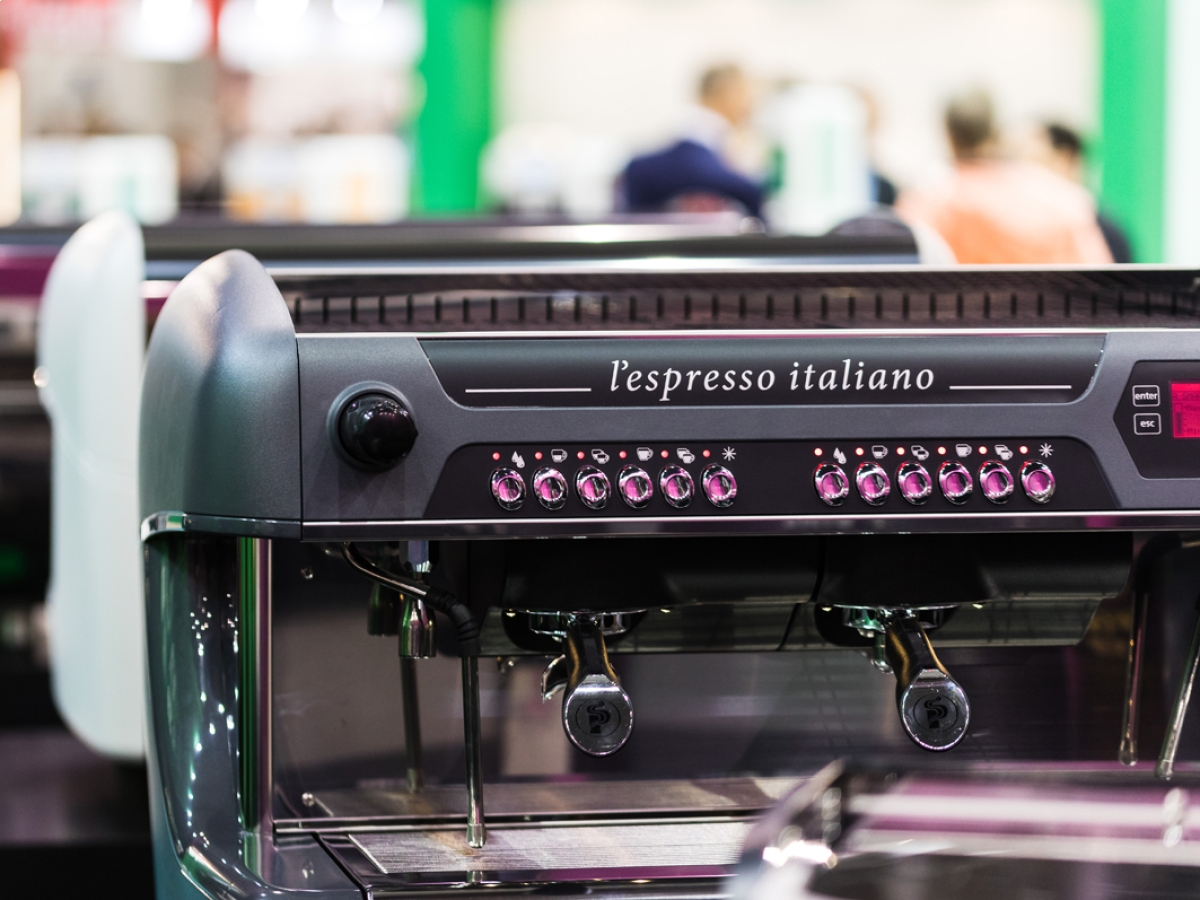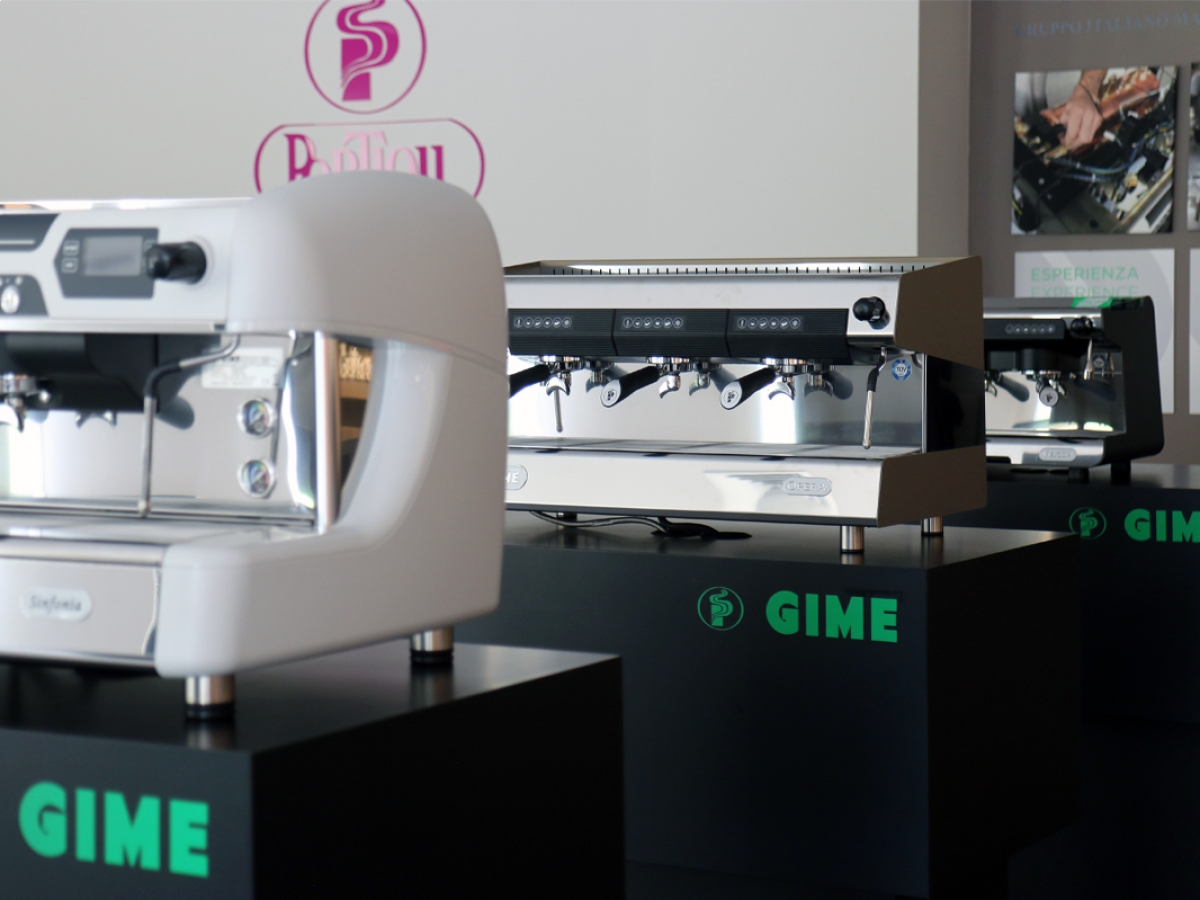
The first espresso machine was born in 1902 when the Milanese Bezzera invented it, but the first models had the defect of burning coffee due to low pressure and high temperatures. Over the years, the operating system evolved from the lever-operated coffee machines to the hydraulic ones, up to the continuous brewing machines born in 1961, the FAEMA E61.
Besides Bezzera, they played an important role in the history of coffee machines:
- Angelo Moriondo (1888): in order to improve and speed up coffee production he decided to design a machine for making instant coffee for a hasty clientele. Therefore, it was that for the 1884 General Exhibition at the Valentino his new espresso machine for making coffee was presented at the booth set up by Moriondo's company, which received a bronze medal. The machine, built in collaboration with the mechanic Martina was made of copper and bronze, about a meter high and bell-shaped, and had a kiosk nearby at which visitors could taste the coffee produced
- Desiderio Pavoni (1905): this is the man who launched and mass sold the first "fast" coffee machine, which you can even take home today
- Achille Gaggia (1938): In this case, from the Gaggia tradition comes the evolved lever machine that delivers one espresso after another non-stop
From bean to machine - The steps of coffee extraction
Before delving into the operation and components of the espresso machine, it is important to know that in order to be extracted, the coffee must be ground, dosed, and compacted in the filter holder, and then be attached to the brewing unit of the espresso machine, which performs the steps of pre-infusion and extraction of the beverage.
At the press of the brewing button, the electric pump raises the water pressure and delivers it to the brewing unit through the heat exchanger and then diffuses it through the hand shower onto the ground coffee and turns it into espresso.
The coffee machine has two water paths: one provides fresh water for espresso brewing through the heat exchanger. Steam is, on the other hand, produced by the hot water inside the boiler.
Operation and components of the espresso machine
Few people know the components of the professional espresso machine and their functions. These include:
- Boiler, contains hot water that is heated by an internal heating element and generates the steam needed to froth milk for cappuccino
- Heat exchanger: is a cylinder assembled in section to the boiler containing the water needed to brew espresso and is heated by induction from the boiler
- Dispensing unit: this is the component to which the filter holder is attached and provides a thermosiphon circle to prevent temperature drops in the system
- Pump: is used to raise the pressure up to 9 atmospheres, which are necessary for the water to pass through the ground coffee cake and extract the best substances from it
- Steam lances: allow steam to be used to whip milk and heat liquids
- Pressure gauges: indicate to the barista at all times the brewing water pressure and the pressure in the boiler
Other components of the professional coffee machines
In addition to the elements just seen, professional coffee machines consist of:
- Pressure switches: these control the pressure and are used to keep the temperature of the water in the boiler constant by switching heat sources on or off. New generation machines have electronic temperature probes, which perform the same function
- Solenoid valves: regulate the proper flow of water or steam
- Level regulator: maintains a constant water level inside the boiler
- Filter holder: these are knobs designed to hold the 7g or 14g filter for espresso brewing
- Hand showers: These are screwed to the brewing unit, equipped with a steel mesh and are used to evenly distribute the hot water over the coffee grounds
Finally, all espresso machines are equipped with a silicone rubber gasket, which provides a seal between the brew group and the filter holder.
Now that you know the features and operating mechanism of the professional coffee machine, it is important to know that it requires periodic maintenance and should be daily cleaned. Periodic routine maintenance interventions concern, for example, the replacement of hand showers, filters and gaskets, thus the parts that you use precisely on a daily basis and that wear out most frequently. Only in this way will you always be able to get a competent espresso.
Portioli coffee machines
GIME stands for Gruppo Italiano Macchine Espresso and is the Portioli Group Company that designs and markets coffee machines, in Italy and abroad. Owned 100% by the Portioli family, GIME intends to offer exclusively to the Portioli sales network a new and different commercial weapon for an increasingly wide and articulated bar-customer service.
It also guarantees machines that are perfectly suitable to Portioli blends. With this in mind, GIME privileges certain factors: perfect fusion of mechanics and electronics, dynamic and ergonomic design, and ease of use and consistency of quality. In short, GIME interprets all the love for coffee and the most innovative engineering.
Among the professional machines Portioli supplies are:
- Opera: Essential design with high performance
- Sinfonia: Elegance and state-of-the-art technology
- Melodia: Compact, functional, low energy consumption and suitable for small businesses
Contact us to learn more about our range of professional coffee machines and to find the right model for your bar or catering business.
Related articles
Portioli Express
Home and office shopping
Experience authentic Italian espresso right at home with our premium blends in a variety of formats.
Go to the shop










